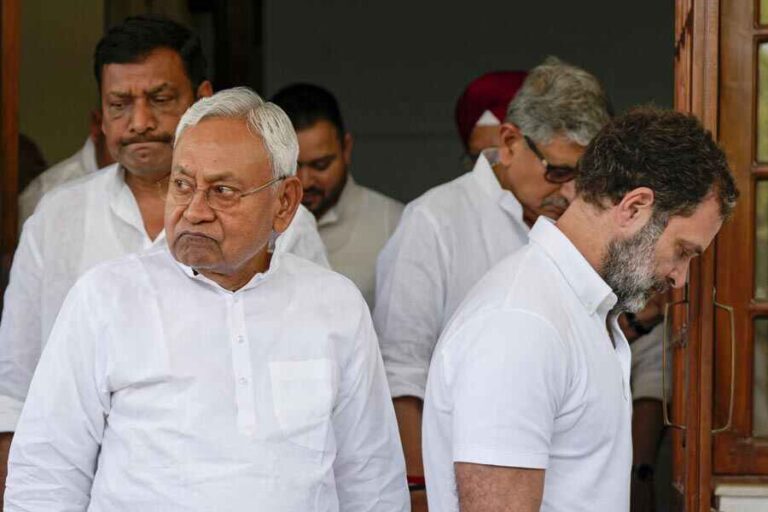News Desk, Kolkata : The political landscape in Bihar has been undergoing significant shifts recently. In a surprising turn of events, Nitish Kumar, the Chief Minister of Bihar, who had been aligning with the opposition for the past four years, is now poised to become an ally of the Bharatiya Janata Party (BJP) again. This unexpected development comes amidst the backdrop of the centenary celebrations of former Chief Minister and Janata Dal (United) leader, Karpoori Thakur, on Wednesday.
Karpoori Thakur, an OBC (Other Backward Class) leader, served as the Chief Minister of Bihar during the Janata Party rule in 1978. During his tenure, he took a historic decision to reserve seats for OBCs in government jobs. On the occasion of his birth centenary, Nitish Kumar made a statement outlining the significance of Karpoori Thakur’s contributions. Interestingly, Nitish Kumar’s remarks hinted at a shift in the political dynamics of Bihar.
Although Nitish Kumar did not explicitly mention any individual or organization, political analysts speculate that his comments were directed at Lalu Prasad Yadav, the chief of the Rashtriya Janata Dal (RJD), and his family. Lalu Prasad Yadav, a socialist leader, had a significant influence on Karpoori Thakur’s political ideology. Nitish Kumar, in his statement, emphasized that they do not bring family members into political power within their party.
The political scenario further intensified when RJD leaders Laloo Singh and Bihar Legislative Assembly Speaker Vijay Narayan Choudhary held discussions with Nitish Kumar on Thursday. On the other hand, Bihar BJP President Samrat Choudhary and Union Minister Ashwini Choubey resigned from their respective positions in Delhi, signaling a potential realignment of political forces in Bihar.
The complexities of Bihar politics are intertwined with the strategies of key players. Nitish Kumar, despite winning the 2020 Bihar Legislative Assembly elections in alliance with the BJP, formed a coalition government with the RJD, Congress, and Left parties in August 2022. The ‘Mahagathbandhan’ government marked a departure from the BJP-led alliance, raising questions about Nitish Kumar’s political trajectory.
Three significant factors seem to be driving Nitish Kumar towards the BJP once again. First, his efforts to forge a nationwide coalition, ‘India,’ did not gain momentum as expected. The name itself faced criticism, and Nitish Kumar did not receive the importance he sought in coalition meetings in Bengaluru, Mumbai, and Delhi.
Second, internal pressures within the JD(U) are pushing for a change in leadership. Lalu Prasad Yadav is advocating for his son, Tejashwi Yadav, to assume the Deputy Chief Minister’s position. Nitish Kumar’s party has only 45 seats in the assembly, and to remain Chief Minister, he needs the support of BJP’s 78 MLAs. However, a section of the BJP in Bihar strongly opposes aligning with Nitish Kumar.
Third, the 2019 Lok Sabha elections witnessed Nitish Kumar’s JD(U) aligning with the BJP in Bihar and winning 16 out of 17 seats they contested. However, in the subsequent assembly elections in 2020, despite being part of the BJP-led alliance, JD(U) won only 43 seats out of 243. This weakened Nitish Kumar’s position, and joining forces with the BJP might be his strategy to secure stability and influence.
In conclusion, Nitish Kumar’s political journey in Bihar has been marked by twists and turns. From initially aligning with the BJP to forming a coalition with the opposition, he now seems to be considering a reunion with the BJP. The intricate political dynamics in Bihar will unfold further as discussions and negotiations progress. Nitish Kumar’s decision will not only shape the future of Bihar politics but also impact the larger political landscape in India.
DISCLAIMER
Our news media denounces any form of bias and disapproves of sensationalism. The disseminated news is entirely educational and aimed at social awareness. Our media maintains absolute impartiality, adhering solely to the purpose of education and social consciousness.


